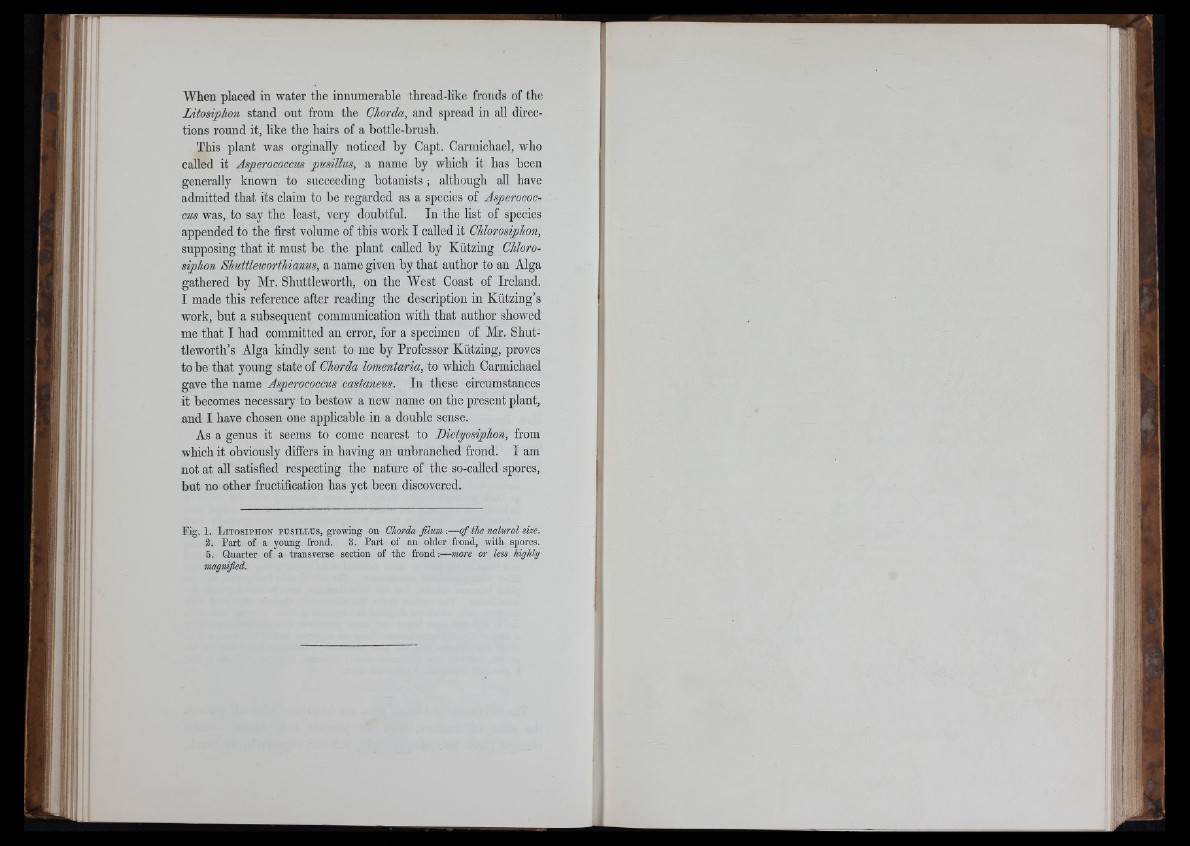
When placed in water the innumerable thread-like fronds of the
Litosiphon stand out from the Chorda, and spread in all directions
round it, like the hairs of a bottle-brush.
This plant was orginally noticed by Capt. Carmichael, who
called it Asperococcus pusillus, a name by which it has been
generally known to succeeding botanists ; although all have
admitted that its claim to be regarded as a species of Asperococcus
was, to say the least, very doubtful. In the list of species
appended to the first volume of this work I called it Chlorosiphon,
supposing that it must be the plant called by Kiitzing Chlorosiphon
Shuttleworthianus, a name given by that author to an Alga
gathered by hir. Sliuttleworth, on the West Coast of Ireland.
I made this reference after reading the description in Kiitzing’s
work, but a subsequent communication with that author showed
me that I had committed an error, for a specimen of Mr. Shut-
tleworth’s Alga kindly sent to me by Professor Kiitzing, proves
to be that young state of Chorda lomentaria, to which Carmichael
gave the name Asperococcus castaneus. In these circumstances
it becomes necessary to bestow a new name on the present plant,
and I have chosen one applicable in a double sense.
As a genus it seems to come nearest to Bictyosiphon, from
which it obviously diifers in having an unbranched frond. I am
notât all satisfied respecting the nature of the so-called spores,
but no other fructification has yet been discovered.
Fig. 1 . L i t o s i p h o n p u s i l l u s , growing on Chorda J ilm i:— o f the natural size.
2. Part of a young frond. 3. Part of an older frond, with spores.
5. Quarter of a transverse section of the frond:— more or less highly
magnified.